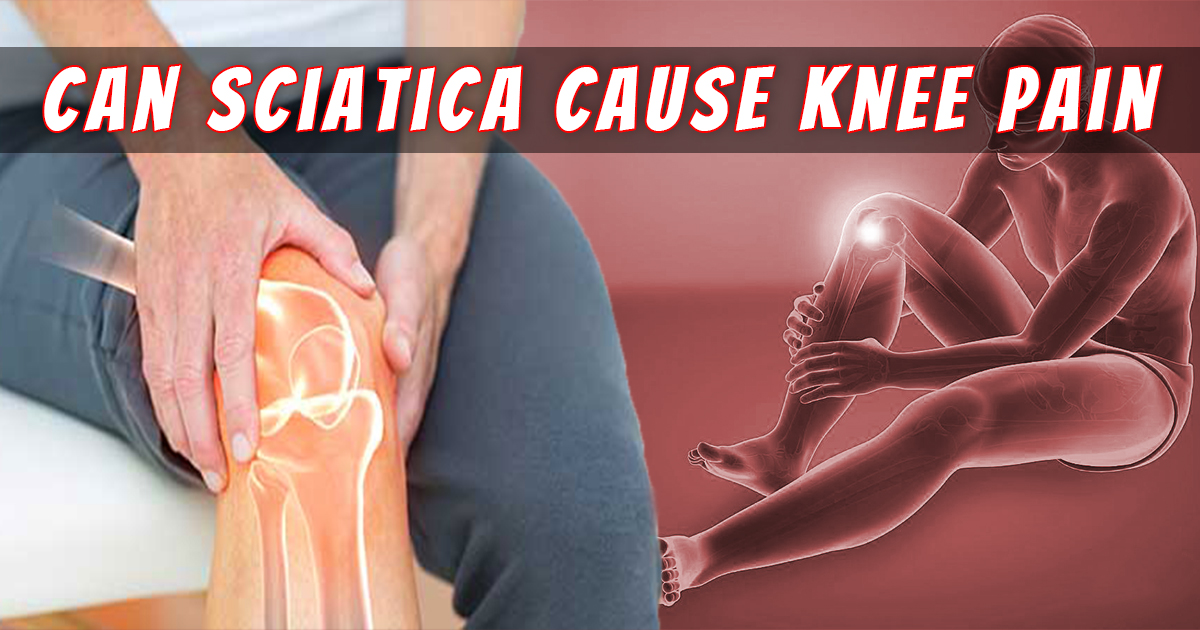Introduction
Sciatica is a condition that impacts millions of people worldwide, often causing sharp pain that radiates from the lower back down through the legs. While most people associate sciatica with back pain, it can also cause discomfort in other areas, such as the hips, buttocks, and even the knees. If you’ve ever wondered, “Can sciatica cause knee pain?” the answer is yes, and understanding this connection is crucial for effective treatment.
In this article, we’ll explore how sciatica can lead to knee pain, symptoms to look for, and what you can do to find relief. We’ll also discuss various treatment options, both at home and through medical care, to manage the pain caused by sciatica. Let’s dive into the details and address the causes, symptoms, and solutions for this complex condition.
What is Sciatica and How Does it Affect the Body?
Sciatica is a condition that stems from irritation or compression of the sciatic nerve. This nerve is the longest in the human body, running from the lower back (lumbar spine) through the hips and buttocks, and down the back of each leg. When this nerve becomes pinched, inflamed, or compressed, it can result in a wide range of symptoms, including pain, tingling, and numbness.
Common Symptoms Associated with Sciatica
The most common symptom of sciatica is pain that radiates along the path of the sciatic nerve. This pain typically begins in the lower back and extends down one leg, often affecting the buttock, thigh, calf, and foot. However, in some cases, sciatica can cause pain in the knee, making it difficult to walk or perform daily activities.
Can Sciatica Cause Knee Pain?
Yes, sciatica can indeed cause knee pain. The pain you feel in your knee may not actually originate in the knee itself but rather from the irritated sciatic nerve. This phenomenon is known as referred pain, where discomfort is felt in one area of the body despite being caused by an issue elsewhere.
Why Sciatica Pain May Radiate to the Knee
The sciatic nerve controls several muscles and sensory areas in the legs, including those around the knee. When the nerve becomes compressed, it can send pain signals to various parts of the leg, including the knee joint. This is why some people with sciatica experience knee pain, even though there’s no actual damage to the knee itself.
According to the Mayo Clinic, sciatica can cause pain that radiates along the sciatic nerve, sometimes reaching the knee and causing discomfort or weakness.
Symptoms of Sciatica-Related Knee Pain
When sciatica affects the knee, it can cause a specific set of symptoms that differ from typical knee injuries. Understanding these symptoms can help you differentiate between sciatica and other knee-related conditions.
How Sciatica Symptoms Manifest in the Knee
- Sharp, Shooting Pain: The pain is usually sharp or shooting rather than dull or achy.
- Numbness or Tingling: Many people experience a tingling sensation or numbness around the knee.
- Weakness: Knee weakness or difficulty bearing weight on the affected leg can occur.
- Burning Sensation: Some individuals describe a burning sensation radiating through the knee and down the leg.
Differentiating Sciatica Pain from Knee Injuries
It’s important to differentiate sciatica-related knee pain from actual knee injuries like torn ligaments or arthritis. Sciatica pain tends to radiate and affect a larger area, whereas knee injuries typically result in localized pain. If you’ve experienced lower back pain or leg pain along with knee discomfort, it’s likely that sciatica is the underlying cause.
How Does the Sciatic Nerve Impact Knee Functionality?
The sciatic nerve plays a crucial role in controlling the muscles that help you move your leg. When the nerve is pinched, it can disrupt the signals sent to these muscles, leading to knee instability, weakness, and even a loss of reflexes.
Sciatic Nerve Pathway and Its Influence on the Legs
The sciatic nerve branches off into smaller nerves that control various parts of the leg, including the knee. Any disruption along the sciatic nerve pathway can impact knee function, causing pain, weakness, or abnormal sensations. In severe cases, prolonged pressure on the sciatic nerve can lead to muscle atrophy, further affecting the knee’s ability to function properly.
Knee Weakness and Instability Due to Sciatica
Knee instability is a common symptom when sciatica is involved. You may find it difficult to stand up or walk for long periods because the nerve isn’t sending proper signals to the muscles around your knee. This weakness can make you feel as if your knee might give out at any moment.
Why Sciatica May Be Causing Your Knee Discomfort
There are several reasons why sciatica could be causing knee pain. These include nerve compression due to a herniated disc, bone spurs, or spinal stenosis. Identifying the root cause of your sciatica is essential for determining the best course of treatment.
Causes of Sciatica-Related Knee Pain
- Herniated Disc: When a disc in your lower spine herniates, it can press on the sciatic nerve, causing pain that radiates down to your knee.
- Bone Spurs: Overgrowth of bone in the spine can pinch the sciatic nerve.
- Spinal Stenosis: This condition occurs when the spaces within the spine narrow, putting pressure on the nerve.
- Piriformis Syndrome: This occurs when the piriformis muscle compresses the sciatic nerve, causing pain that may radiate to the knee.
Risk Factors Leading to Sciatica Affecting the Knee
Certain factors can increase your risk of developing sciatica, including obesity, sedentary lifestyle, poor posture, and previous injuries to the spine. These factors can contribute to the compression or irritation of the sciatic nerve, leading to knee pain.
How to Relieve Knee Pain Caused by Sciatica
Managing knee pain caused by sciatica requires a combination of lifestyle changes, physical therapy, and medical treatments. Here are some options for relieving pain and improving your overall quality of life.
Home Remedies and Exercises for Sciatica-Related Knee Pain
- Stretching: Perform gentle stretches to relieve tension in the lower back and legs.
- Heat and Cold Therapy: Apply a heating pad or ice pack to the affected area to reduce inflammation and pain.
- Over-the-Counter Pain Relievers: Medications like ibuprofen or acetaminophen can help alleviate pain.
Medical Treatments for Knee Pain from Sciatica
- Physical Therapy: A physical therapist can teach you exercises to strengthen your back and leg muscles, helping to relieve pressure on the sciatic nerve.
- Corticosteroid Injections: These injections can reduce inflammation around the nerve, providing relief.
- Surgery: In severe cases, surgery may be necessary to relieve the compression on the sciatic nerve.
When Should You See a Doctor for Sciatica and Knee Pain?
It’s important to consult a doctor if your knee pain is severe, persistent, or accompanied by symptoms like numbness, tingling, or weakness in the legs. A healthcare professional can perform diagnostic tests, such as an MRI or X-ray, to determine the cause of your sciatica and knee pain.
Warning Signs of Severe Sciatica Knee Pain
- Inability to control bowel or bladder function.
- Sudden, sharp pain that worsens over time.
- Loss of feeling in the affected leg.
Diagnostic Tools for Sciatica and Knee Pain Connection
Your doctor may use imaging tests, such as MRI or CT scans, to identify the cause of your sciatica and how it relates to your knee pain.
Preventing Knee Pain When You Have Sciatica
Preventing knee pain caused by sciatica often involves maintaining a healthy lifestyle and addressing the underlying causes of nerve compression.
Lifestyle Changes and Exercises to Prevent Sciatica Flare-ups
- Stay Active: Regular exercise can help keep your muscles strong and prevent flare-ups.
- Maintain Good Posture: Proper posture can reduce the risk of sciatica by keeping your spine aligned.
Ergonomic Tips to Minimize Sciatic Nerve Pressure
Use ergonomic chairs, maintain proper posture, and avoid sitting for long periods to reduce pressure on the sciatic nerve.
6. Sciatica or Arthritis: How to Tell the Difference
Sciatica and arthritis can both cause knee pain, but they are different conditions. Sciatica stems from nerve irritation, while arthritis is caused by joint inflammation. If your pain comes with tingling, numbness, or shooting sensations down your leg, it’s likely sciatica. On the other hand, arthritis pain is more localized in the knee joint and often worsens with movement. Consulting a healthcare professional can help you determine which condition is causing your discomfort and direct you to the right treatment.
Conclusion: Managing Sciatica and Knee Pain
Sciatica can indeed cause knee pain, but understanding the root cause and knowing how to manage the symptoms can significantly improve your quality of life. Whether through home remedies, physical therapy, or medical treatment, there are plenty of options available for relieving knee pain caused by sciatica.
By staying proactive and consulting with healthcare professionals, you can manage both sciatica and knee pain effectively and prevent further complications.
FAQs About Sciatica and Knee Pain
- Can Sciatica Cause Pain in Both Knees?
- Yes, though it’s more common for sciatica to affect only one leg, in rare cases, it can cause pain in both knees.
- What Exercises Help Relieve Knee Pain from Sciatica?
- Stretching exercises, especially those targeting the lower back, can help alleviate pain.
- How Long Does Sciatica-Related Knee Pain Last?
- The duration of pain can vary depending on the cause of sciatica. Acute sciatica may last for a few weeks, while chronic sciatica could persist for several months.
For more helpful information, visit My Read Magazine.

Joseph Bush is a seasoned writer and researcher with over 7 years of experience covering a wide range of general topics, from lifestyle and technology to business and current events. He is dedicated to producing fact-checked, reader-friendly content that informs, engages, and empowers readers.
Throughout his career, Joseph has followed strict editorial guidelines, relied on reputable sources, and ensured every article meets the highest standards of accuracy and clarity. His expertise spans multiple fields, allowing him to explain complex topics in a way that’s easy to understand.
Passionate about continuous learning, Joseph stays updated on industry trends and best practices to deliver trustworthy, well-rounded insights. Readers can rely on his work for its credibility, depth, and real-world relevance.




